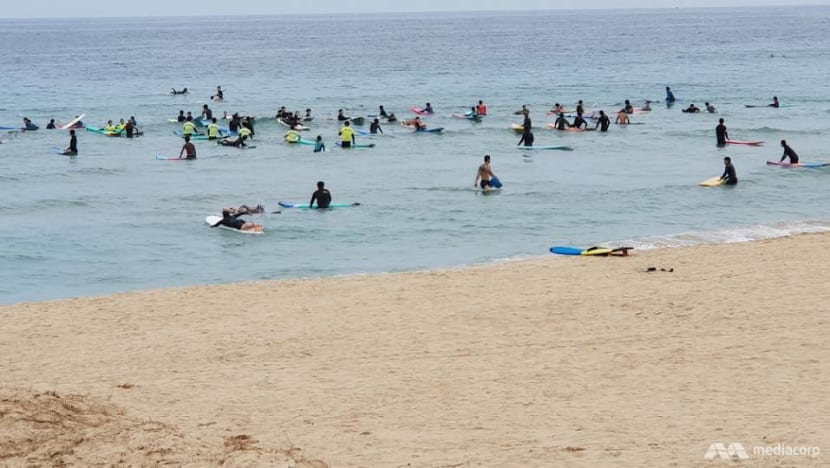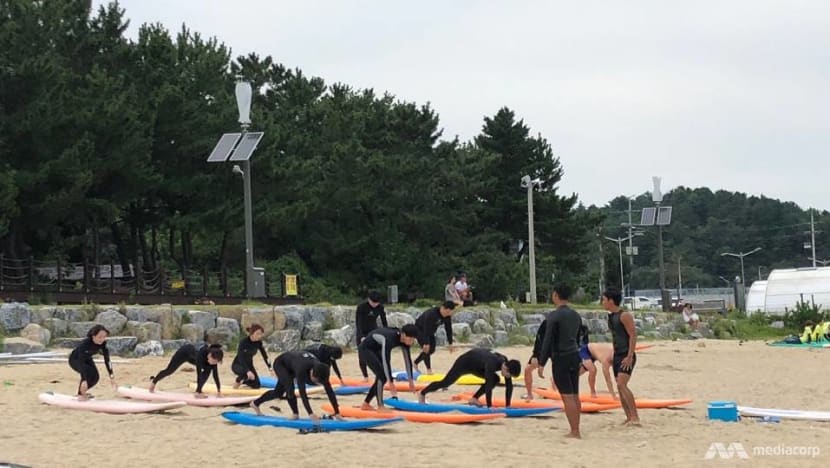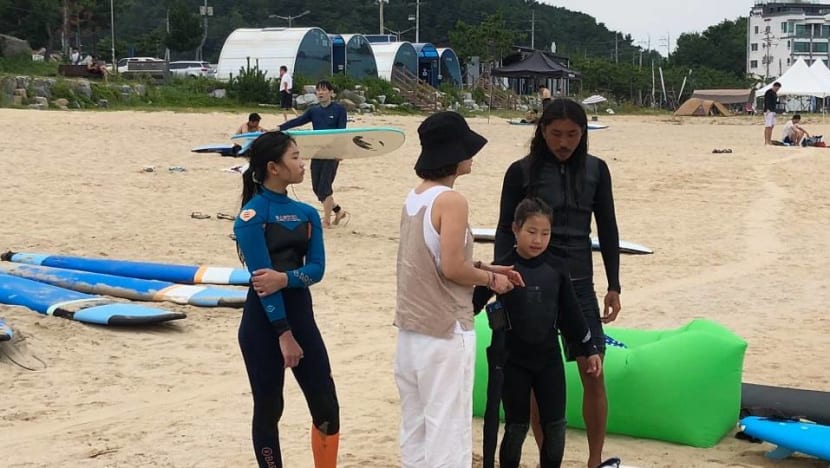More Koreans catching the waves at beaches near demilitarised zone

Surfing is quickly gaining popularity in South Korea, especially at the beaches near the DMZ. (Photo: Lim Yun Suk)
YANG YANG, South Korea: Surfing has not been one of the main attractions in South Korea for foreign visitors, but that looks set to change.
The sport has quickly gained popularity around the country, especially at beaches near the demilitarised zone (DMZ) separating South and North Korea.
“Many of the beaches in Gangwon province were closed because they were too near North Korea,” said Lee Seung Dae, head of the surfing association in Yang Yang, Gangwon province. “I didn’t even know where Yang Yang was a few years ago. But now it’s the place to go for surfing.”
Located about 70km away from the DMZ, Yang Yang wasn’t known as a tourist spot for Koreans, especially since much of the coastline remains militarised and heavily guarded by soldiers from both sides of the border.
Even today, the beaches that are open to the public have restricted hours from 6am to 10pm.
Before they open and close, South Korean soldiers patrol the areas where barbed wire is still in place to ensure there are no infiltrators from North Korea.
In past decades, there have been several incidents in Gangwon province, which is partially also part of North Korea as it was split following the three-year Korean War that ended in 1953.
In September 1996, a North Korean submarine ran aground near the city of Gangneung, less than an hour's drive from Yang Yang. About 11 people including soldiers and civilians were killed then as they pursued 13 North Koreans who crossed the border in the submarine.
But in recent years, small surfing towns have developed around the county, and surf shops, restaurants and places to stay have mushroomed to meet the demands of the growing surfing population in South Korea.

It’s a new sport and South Korea only started gathering data about its surfing population a few years ago. According to the Surfing Association, there were about 55,000 three years ago, but that number has recently more than tripled to about 200,000 surfers.
Surfers believe that number will grow further in the coming years. especially if there is permanent peace on the Korean peninsula.
“We hear lots of talk of peace these days, and how the military posts and facilities around the border will be removed,” said Lee at the Yang Yang surfing association. “So I think many more surfers will be coming here when that happens.”
He said surfers are also looking forward to the day they can go into North Korea and ride the waves there as the untouched beaches will likely have some of the best waves on the Korean peninsula or even around the world.

But for now, surfers are happy with what the waves in South Korea have to offer and many are flocking to the Yang Yang beaches especially during the summer holidays.
“I searched the Internet to see where I could take my two daughters to learn surfing before going to Australia,” said a mother of two daughters. “I found this place which was described as the famous spot here.”
She said her two daughters, aged nine and 12, liked the surfing lessons they got and will probably continue to surf in and outside South Korea.
Noh Jin-woo, who teaches surfing in Yang Yang, said there are more and more Koreans eager to learn these days.
“Before last year, it was mostly young people that came here to surf. But since (then), there have been a lot of families, too," said Noh, who has been surfing for about eight years.
It's not just the young Koreans that are enjoying the sport but Koreans of all ages, said Lee Dong-Young, a surfing instructor. “A few years ago, they were mostly in their 20s and 30s. The oldest were those in their 40s.
"But these days, we are seeing more families come and enjoy. It’s no longer just a sport for the young.”












